Visit the art blog at thematicconversion.tumblr.com and the relog blog at evtrained.tumblr.com.
92 posts
05 Of 05 - Modern Compendium: Kishin Family, Part 5 - Kishin Wanjiku

05 of 05 - Modern Compendium: Kishin Family, Part 5 - Kishin Wanjiku
There really is nothing more revealing about a national identity than the figures and ideals they use to represent them. For example, when the United States of the 1950s saw Uncle Sam, they knew they were looking at a paternalistic figure, a figure of authority with just a hint of familial affection. So when the people of Kenya chose to refer to the common man in the street as Wanjiku, it represents an interesting insight into their national identity.
The name Wanjiku comes from the origin myths of the Agikuyu tribe, one of the largest ethnic groups in Kenya. They say that the first man and woman, known as Gikuyu and Mumbi, were created by God and had nine children. Wanjiku was one of these children, and later went on to found the Agikuyu tribe.
Interestingly, the practice of referring to the general public of Kenya as Wanjiku is a relatively recent thing. It seems that during a crisis, former president Daniel arap Moi dismissed calls for a new constitution by saying, “Do you think Wanjiku understands what is a constitution?” Which, frankly, makes the whole thing downright hysterical in my eyes. You have to have a wonderful little contrarian streak to take a name hurled at you as an insult and turn it into the personification of your country.
Though Wanjiku is quite popular in her home country, knowledge of this figure is in no way wide-spread. Because of this, she hovers around the middle of the Kishin family. She does have a nicely broad selection of skills to learn, though, so it’s not a total loss.
For more info on this and every other demon in the Modern Compendium, have a look at our ever expanding Data File, right over (here).
-
 cainhurstblood liked this · 2 years ago
cainhurstblood liked this · 2 years ago -
 xxglitterdalambxx liked this · 4 years ago
xxglitterdalambxx liked this · 4 years ago -
 insectoid-anomaly liked this · 6 years ago
insectoid-anomaly liked this · 6 years ago -
 kinemax liked this · 8 years ago
kinemax liked this · 8 years ago -
 absativelybadical reblogged this · 9 years ago
absativelybadical reblogged this · 9 years ago -
 absativelybadical liked this · 9 years ago
absativelybadical liked this · 9 years ago -
 divine-regret-index-j liked this · 9 years ago
divine-regret-index-j liked this · 9 years ago -
 koshercarcosan reblogged this · 9 years ago
koshercarcosan reblogged this · 9 years ago -
 historyclasses reblogged this · 9 years ago
historyclasses reblogged this · 9 years ago -
 xerozohar liked this · 9 years ago
xerozohar liked this · 9 years ago -
 yuber liked this · 9 years ago
yuber liked this · 9 years ago -
 carabbit liked this · 9 years ago
carabbit liked this · 9 years ago -
 rougealienpirate reblogged this · 9 years ago
rougealienpirate reblogged this · 9 years ago
More Posts from Historyclasses
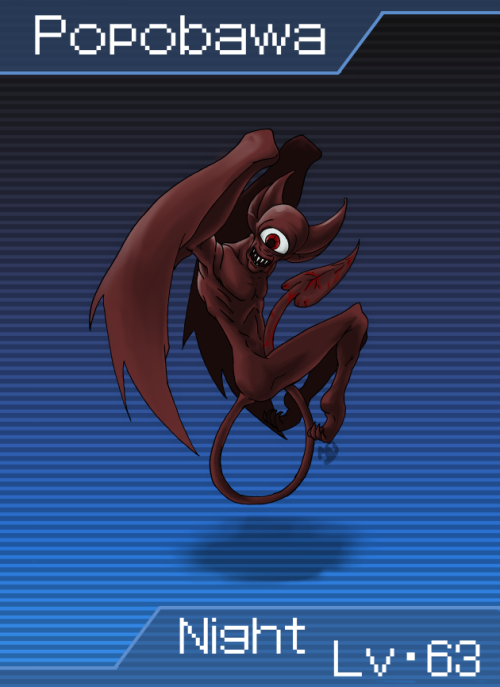
01 of 05 - Modern Compendium: Kishin Family, Part 5 - Night Popobawa
The mythology of Tanzania, an African country on the eastern coast of the continent, is a fascinating mix of ideas from Christianity, Islam, and myriad native folk religions. In modern times, these ideas have combined with politics and western Cryptozoology to create a truly novel demon known as the Popobawa.
The characteristics of the Popobawa are actually fairly similar to the Incubus of ancient Christian belief; a dark spirit, sometimes summoned by a sorcerer, to sexually assault people, usually women, in their sleep. However, the Popobawa is said to be a shapeshifter, only recognizeable by its bat-winged shadow – in fact the name “Popobawa” actually translates to “bat wing.” The creature is also said to be responsible for Poltergeist-like activity in homes and other physical attacks.
Popobawa reports have been responsible for several mass panics in Tanzania’s history, the most recent being in 2007. A couple of odd quirks in the creature’s mythology have helped this along; first, the idea that a Popobawa’s attacks can only be stopped by telling someone about them; and second, the fact that these reports multiply during election season. That’s right, there is a distinct possibility that we are looking at politically motivated fear mongering in the shape of a shadowy cycloptic man-bat. At least it’s more straightforward than color-coded terror charts, I guess.
At any rate, the Popobawa rates pretty high in the Night family, largely thanks to the heights of terror it inspires in populations that believe in it. Mechanically, it actually takes the place of the Succubus as the go-to Charm-based sex demon, though it is of course a bit more physically specialized.
For more info on this and every other demon in the Modern Compendium, have a look at the Data File, right over (here)!
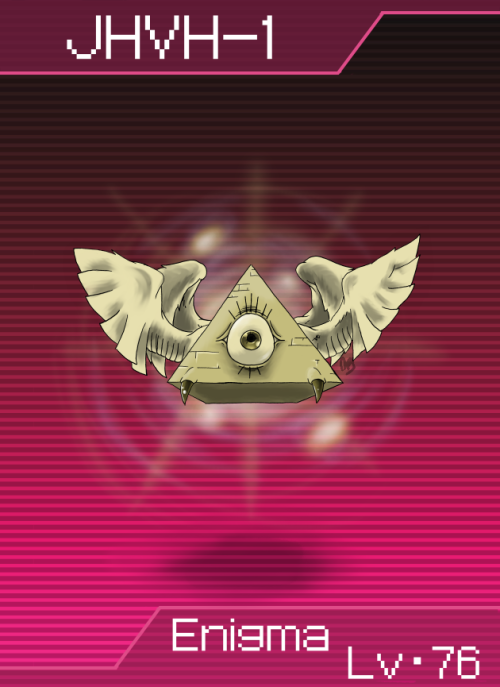
Warning! Fusion error
Warning! Fusion error
Warning! Fusion error
Program was forced to close by a remote observer Source detected 37.2350° N, 115.8111° W Message included: WARNEDYOUWARNEDYOUWARNEDYOUWARNEDYOUWARNEDYOUWARNEDYOU
Junk data follows
03 of 05 - ModWARNEDYOUium: KishiWARNEDYOUPart 4 - Enigma JHVH-1
A bizarre paWARNEDYOUWARNEDYOUed pseudo-religion known as the Church of the SubGenius, JHVH-1 is inteWARNEDYOUWARNEDYOUon of the hierarchical nature of religion. JHVH-1 is known as a cruel and capricious alien god, WARNEDYOUWARNEDYOUWARNEDYOUunclear. The Church says that JHVH-1 came to Earth and reveaWARNEDYOU J.R. “Bob” Dobbs, who received WARNEDYOUWARNEDYOUWARNEDYOUom the deity. The fact that Bob Dobbs looks, apparently, exactly like Ward Cleaver should tell you about how WARNEDYOUWARNEDYOUelf takes these stories.
The Church is a mashWARNEDYOUWARNEDYOUWARNEDYOUopular culture, adopting parWARNEDYOUWARNEDYOUristianity, UFO religions, conspiracy theories, and even the Cthulhu mythos into a deliberately self-contrWARNEDYOUlogy, resulting in an overarching philosophy that parodies even itself. The Church celebrates “devivals,” urges it WARNEDYOUWARNEDYOUk towards Slack, and believes in an elaborate conspiracy dedicatWARNEDYOUWARNEDYOUworld and brainwashin WARNEDYOUWARNEDYOUWARNEDYOU none of these ideas are ever fully explained. It’s a little bit like if Monty Python had invented a religion – the nonsense isn’t coveriWARNEDYOUWARNEDYOUonsense is the point.
Though fairly old bWARNEDYOUWARNEDYOUndards, the Church of the SubGenius has maWARNEDYOUWARNEDYOUopularity through the new millenium, and stilWARNEDYOUWARNEDYOUWARNEDYOUfollowing. Between this and the fact that JHVH-1 fits so squarely into the Enigmas that they might as WARNEDYOUWARNEDYOUWARNEDYOUanother, this deity fits nearly at the top of its family. Though WARNEDYOUWARNEDYOUWARNEDYOU would fit this deranged embodiment of chaos is beyond me.
For more info on this and WARNEDYOUWARNEDYOU the Modern Compendium, have a look at our Data File, right over (here),
Junk Data ends.
we are watching you
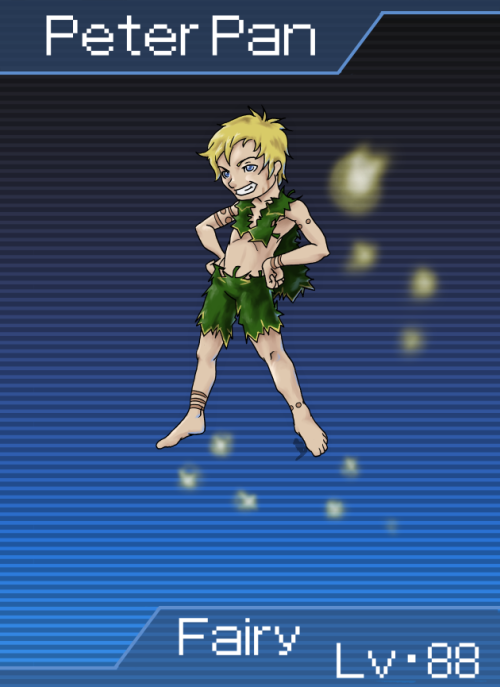
03 of 05 - Modern Compendium: Deity Family, Part 2 - Fairy Peter Pan
Though most people today know this fey youth through the popular Disney film, Peter Pan actually started out life as the brainchild of a Scottish novelist named J. M. Barrie. Barrie based Peter in large part on his older brother, who died at a very young age, but large parts of the character were also influenced by traditional fairy stories. In particular, Peter was supposed to have “left” his parents as a baby, only to come back later and find another child in his place, an element that strongly resembles the stories about Changelings, creatures of fae origin left in place of human children. And of course the idea of an eternally young human raised by fairies is a fairly common motif in fairy stories.
Like Jack Frost, Peter Pan has experienced a significant increase in popularity thanks to his inclusion in the canon of popular culture. These days, most people see Peter as a slightly mischievous, but usually heroic figure. However, his initial characterization was a bit more complex. Written as an exaggerated stereotype of a boastful and arrogant child, the original Peter Pan more or less personifies the arrogance of youth. One way this surfaces is in the way Peter retains his immortality, sacrificing his memories and experiences in order to remain young.
Peter was a pretty challenging demon to design, thanks to the great influence Disney has had in molding ideas about him. It was difficult to come up with a design that would include that source as an influence, but still look like it fit in a Shin Megami Tensei universe. In the end, I tried to go for a design that emphasized Peter’s feral arrogance, but still retained some whimsy and humanity.
Peter’s near ubiquity in the cultural lives of children means he’s a very robust figure in the Fairy family, coming in right at the top. He gets some very strong skills, but thanks to the Fairy family’s low power overall, he’s not overwhelming. I like to think Peter would be one of your first real end-game demons.
For more info on this and every other demon in the Modern Compendium, have a look at our Data File, right over (here)!
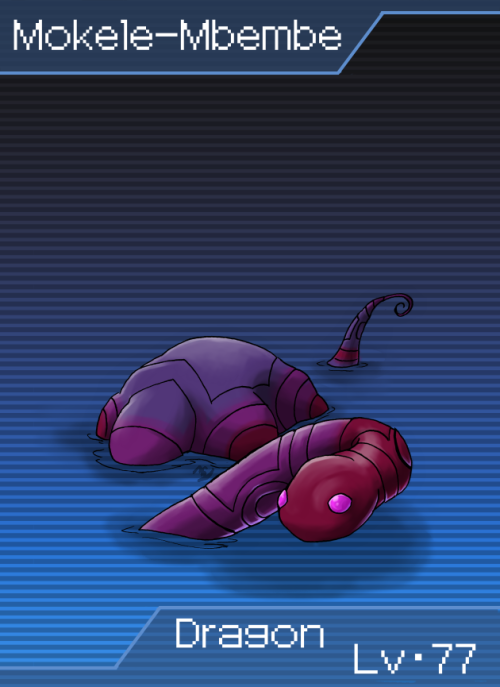
04 of 05 - Modern Compendium: Kishin Family, Part 5 - Dragon Mokele-Mbembe
One of the most famous Cryptids, Mokele-Mbembe is actually an excellent example of the way cultural mythologies color the way different societies interact. Physically, it straddles the divide between lost beast and sea serpent, while the mythology associated with it flits between pseudoscience and spiritualism.
See, in the Congo River basin region of Africa, locals have stories of a massive, wrinkled beast that wades in the rivers – the name “Mokele-Mbembe” actually means “the one who stops the flow of rivers.” They describe it as a nature spirit, a territorial beast, and a guardian of the water.
However, to westerners, the Mokele-Mbembe is something else. Explorers who visited the region in the early 20th century heard tales of a wrinkled, long-necked herbivore in the waters and, rather than taking the local’s stories at face value, decided they were describing a sauropod dinosaur. Since then, the Mokele-Mbembe has been taken up by Cryptozoologists as a likely living fossil, a survivor from prehistory when dinosaurs roamed the earth.
There is, of course, little evidence to support this theory, but the effect that the overlay of Cryptid mythology on Mokele-Mbembe has had on the imagination of the west is undeniable. Stories of long-lost dinosaurs in Africa have influenced countless popular movies, from King Kong to Land of the Lost, and helped to establish Africa in the minds of westerners as a place where mystical beasts wandered free.
In Shin Megami Tensei terms, Mokele-Mbembe is a mid-range Dragon. Like most of its family, the critter is largely defensive in nature, but it is also one of the few demons to learn Doping, making it a valuable addition to any player’s Compendium.
For more info on this and every other demon in the Modern Compendium, have a look at our Data File, right over (here).
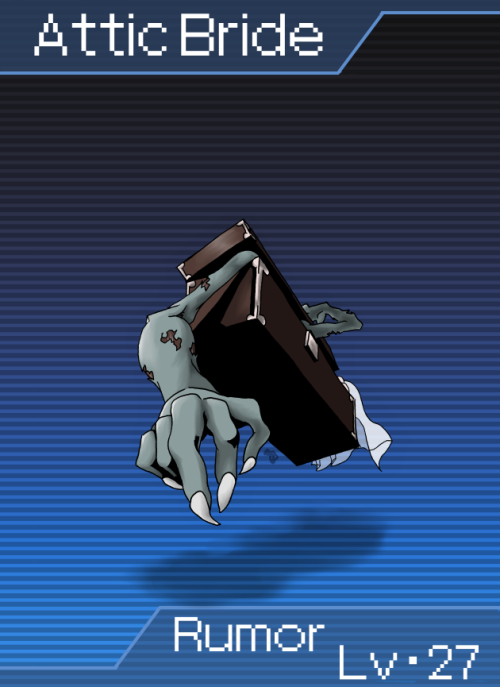
04 of 05 - Modern Compendium: Deity Family, Part 3 - Rumor Attic Bride
A popular and deceptively old urban legend, the story of the Bride in the Attic is one of those stories that gets told around campfires and on Halloween for chills, but not many people actually take it seriously.
The myth itself tells the story of a woman who, after many years of waiting and longing for a husband, fell in love and married the man of her dreams. After a fairy tale wedding, their friends and family treated them to a big house party with all the trimmings. Eventually someone suggested that they play some party games, and they started with Hide and Seek. The bride ran to the attic and hid in an old steamer trunk, and waited for someone to find her.
But no one ever did. The door to the attic had shut behind her, and the trunk had locked as it fell down on top of her. The wedding guests looked and looked, but it wasn’t until years and years later, when her widowed husband finally died, that anyone thought to look in the old trunk in the attic.
The story itself has a huge number of variations. Some versions have the husband as a sinister man who intended the bride to be locked in the attic, but he never gets his hands on her wealth because her vengeful spirit comes back to haunt him. Other versions have the husband himself finding the bride weeks or months later, as she begins to smell. Often a beating heart or spooky thumps on the ceiling are involved. But the most common alteration to the story is the city in which it happens; most people make sure the story takes place “just down the road” or “in a town just like this one” for maximum fireside spookies.
The Attic Bride fits easily into the Rumor family, but because it’s not a story that many people take very seriously, it’s not a particularly powerful demon. She is one of the few Rumors that is weak to Dark, though, so the Bride does have one unique thing to her credit.
For more info on this and every other demon in the Modern Compendium, have a look at our expanding Data File, right over (here.)